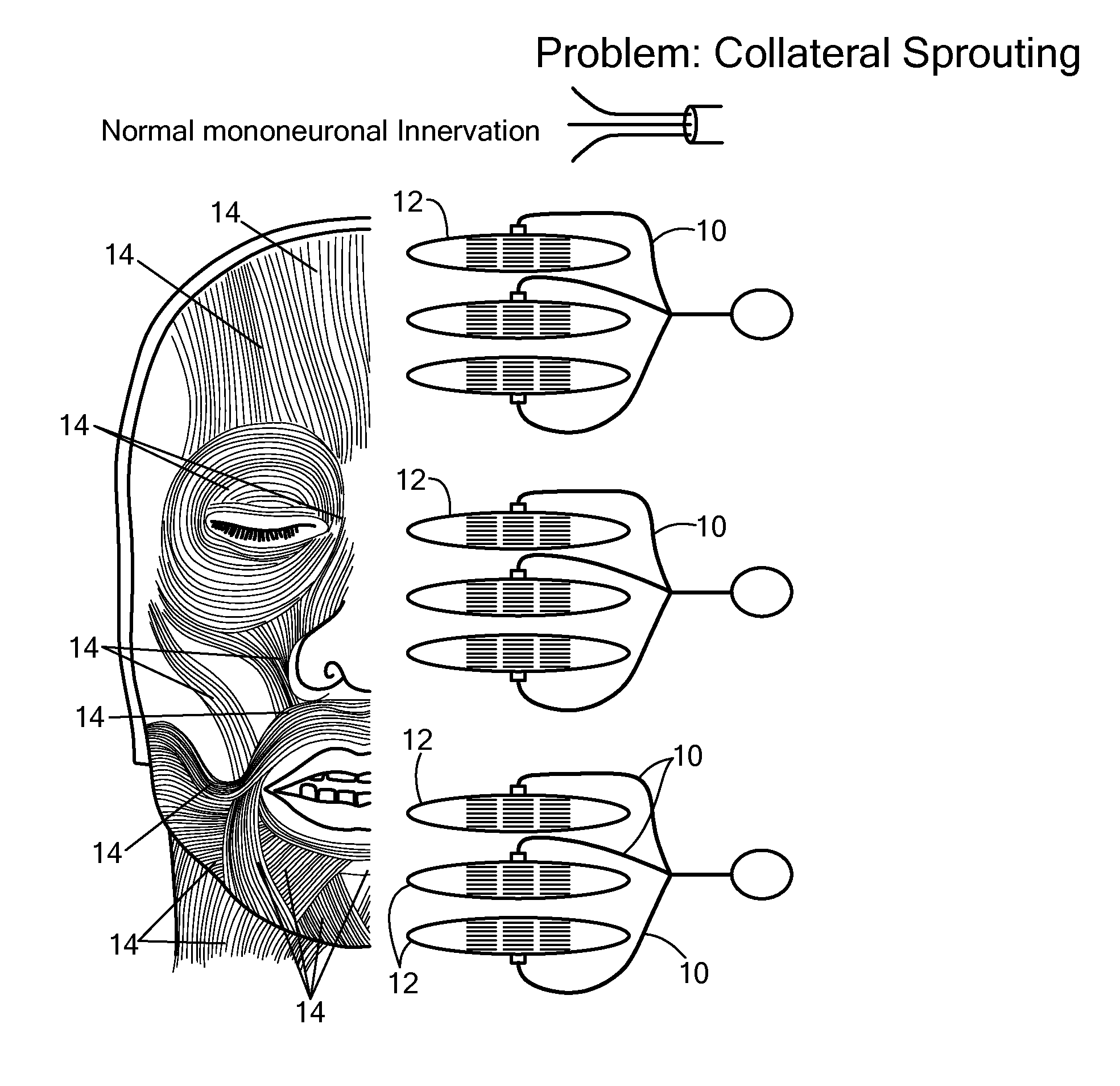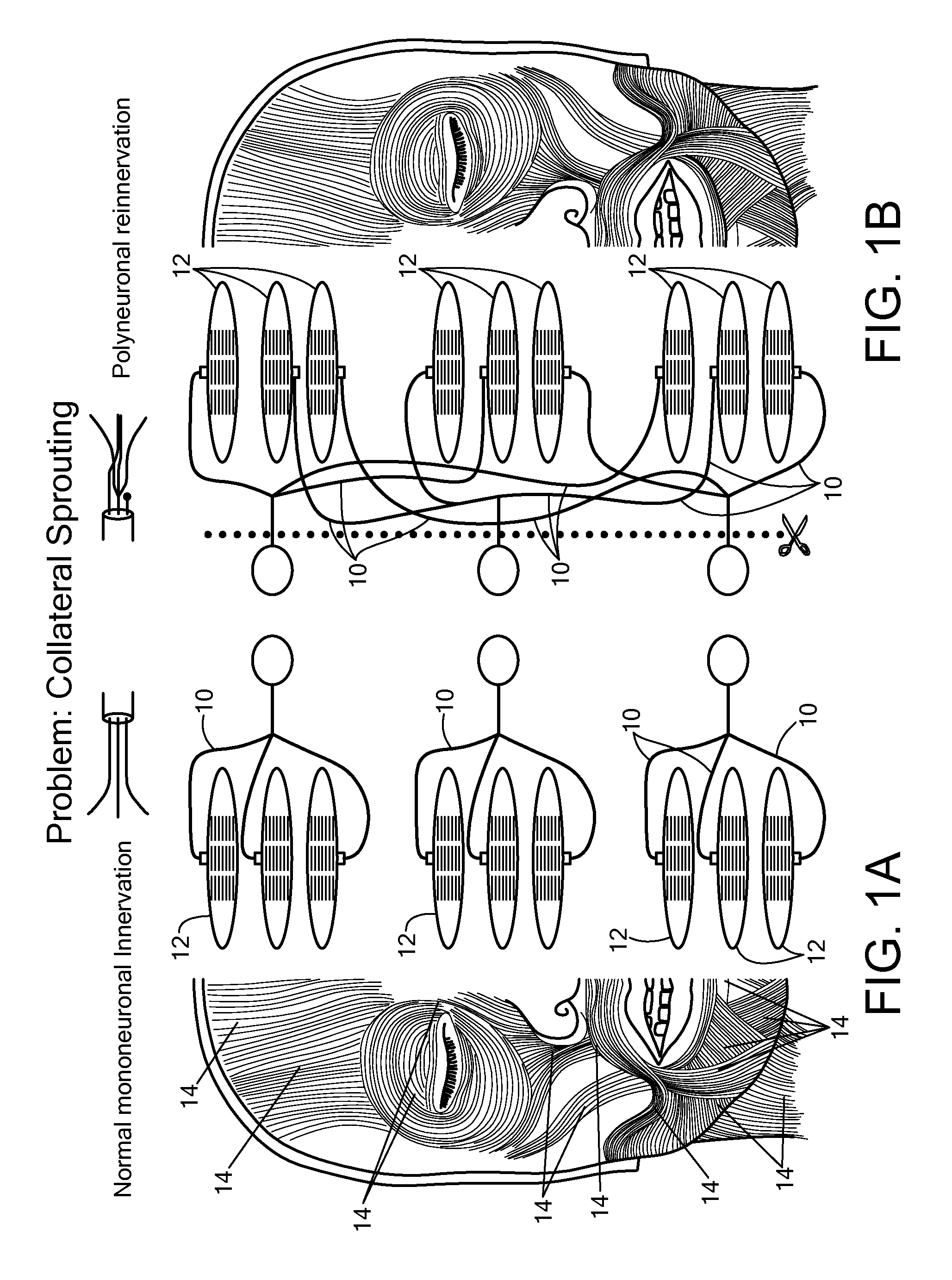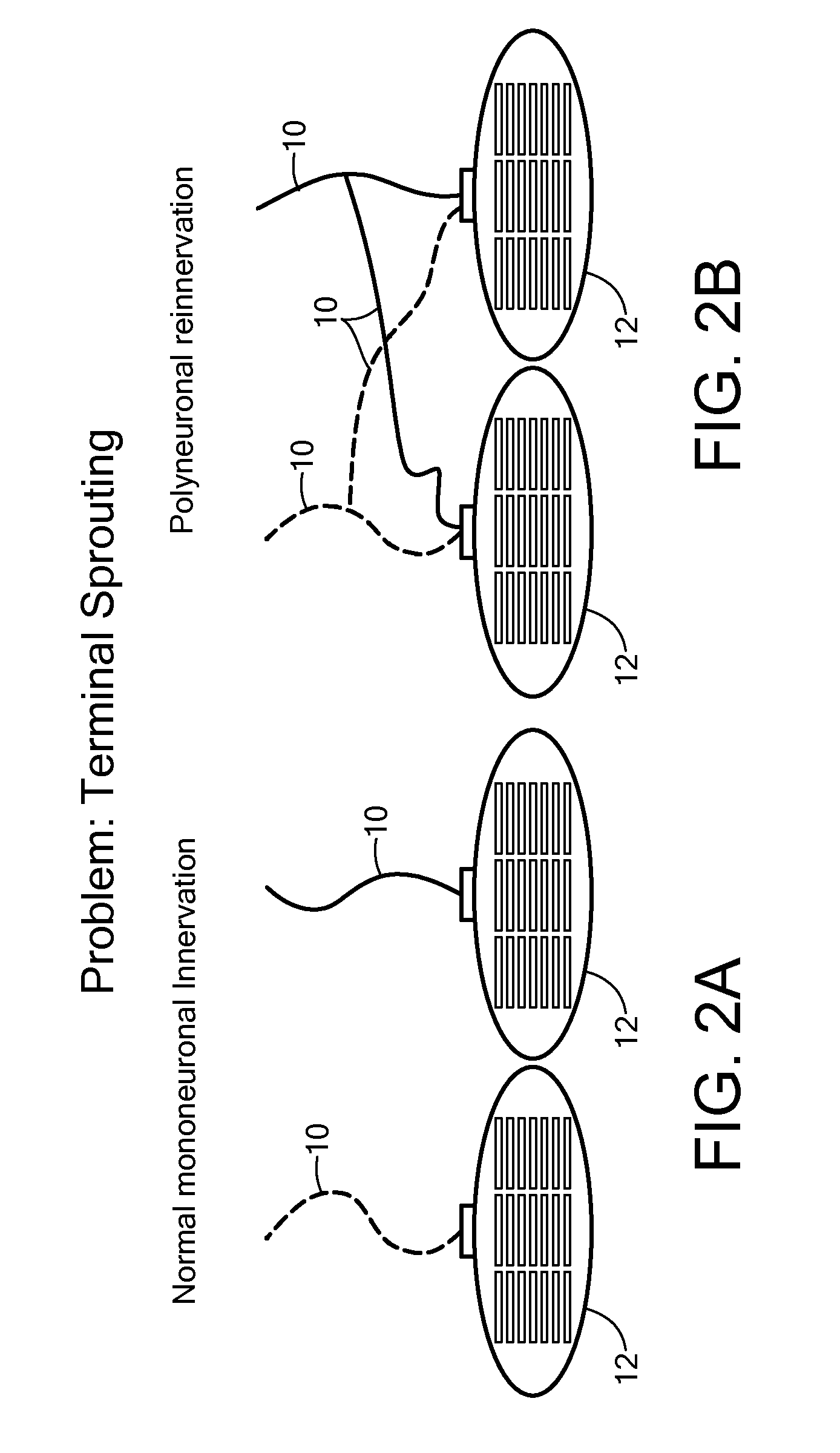System and method for facial nerve stimulation
- Summary
- Abstract
- Description
- Claims
- Application Information
AI Technical Summary
Benefits of technology
Problems solved by technology
Method used
Image
Examples
Embodiment Construction
[0027]Various embodiments of the present invention provide a neuroprosthesis for restoring or partially restoring a unilaterally paralyzed face. The muscle(s) of interest for rehabilitation are synkinetic (i.e., misdirected) reinnervated muscles and not denervated muscles. Embodiments apply electrostimulation in a prescribed manner and location in order to stimulate the appropriate facial nerves on the damaged side of a subject's face. This is accomplished by placing an electrode in the parotic region of the subject's damaged side of the face and stimulating the appropriate nerve branches in order to activate the desired facial muscles. The sum action potential of the activated mimic muscles may be recorded with a medical device, such as an EMG and / or acceleration sensor. This impulse may then be used to determine which nerves branches to subsequently stimulate in order to activate the desired mimic muscles on the damaged side of the face. This potentially allows the facial muscles ...
PUM
 Login to View More
Login to View More Abstract
Description
Claims
Application Information
 Login to View More
Login to View More - R&D
- Intellectual Property
- Life Sciences
- Materials
- Tech Scout
- Unparalleled Data Quality
- Higher Quality Content
- 60% Fewer Hallucinations
Browse by: Latest US Patents, China's latest patents, Technical Efficacy Thesaurus, Application Domain, Technology Topic, Popular Technical Reports.
© 2025 PatSnap. All rights reserved.Legal|Privacy policy|Modern Slavery Act Transparency Statement|Sitemap|About US| Contact US: help@patsnap.com



